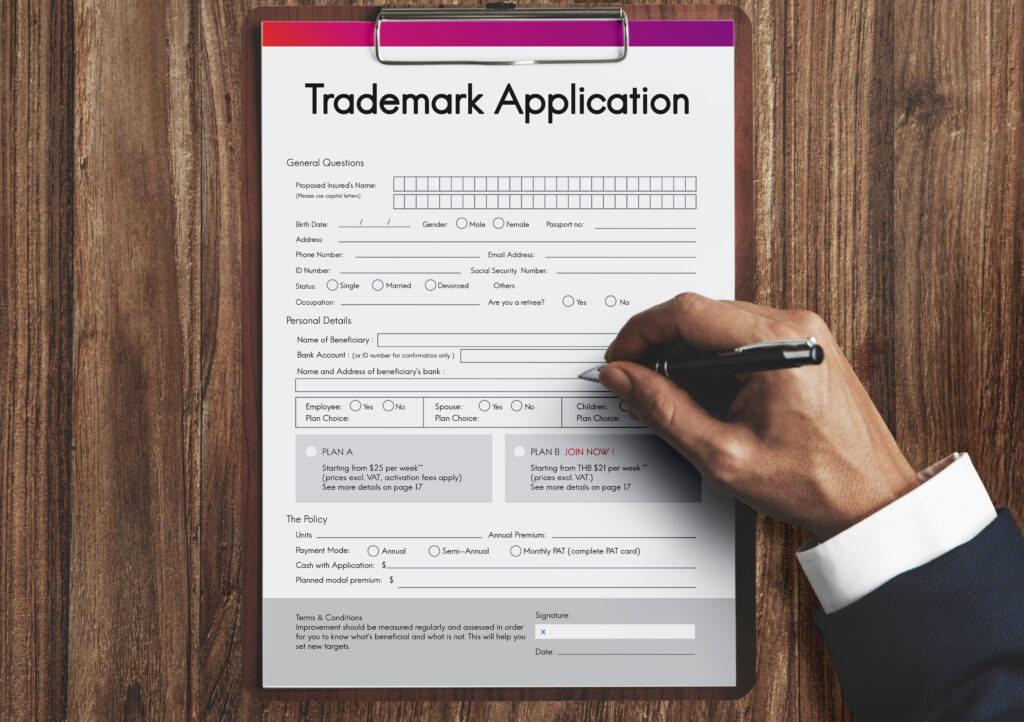From the very largest to the smallest of small business owners, obtaining trademark protection for the marks you use on your products or services is essential, not only to stand out from the competition and distinguish yourself in the marketplace, but to prevent infringement on your intellectual property. Filing a trademark application for registration with the United States Patent and Trademark Office (USPTO) ensures that you will have legal recourse if anyone else decides to use your trademark.
However, you can’t begin the application process without knowing which type of trademark you need to apply for. There are a few broad distinctions, such as whether you sell physical goods or services, but there are also a number of specific categories of marks, known as trademark classes, which are important for every applicant to understand.
Understanding What Type of Trademark You Need
Before getting into the specifics of trademark class, first, you need to know exactly which products you intend to offer under a given mark. This includes two broad categories: “goods,” which are any physical products you offer or sell, and “services,” which are actions of helping or doing work for someone else.
The USPTO recognizes 45 distinct product classes, defined by U.S. statute and international treaties under the auspices of the World Intellectual Property Organization (WIPO). These include 34 classes of goods and 11 classes of services. What’s more, understanding which class of goods or services apply to your offering is not always immediately clear, since many classes seem substantially similar to others.
For example, Class 24 (textiles) sounds about the same as Class 22 (textile products). Software products offered for sale under Class 9 are not the same as online games or applications that are hosted remotely and which the user does not download onto their computer (Class 41, a service).
Fortunately, the USPTO provides a number of online resources which anyone, not just a trademark attorney, can consult to help with applying for a trademark. These include:
- Trademark Electronic Search System (TESS) – an online database of all USPTO trademark registrations and applications, which are made available to the public as part of the application review process. Use this to search for existing trademarks which may be substantially or “confusingly similar” to yours.
- USPTO Trademark ID Manual – use this to identify the specific classes which pertain to any of your goods and/or services, along with pre-approved standard descriptions of different product classes which you can use in preparing your application.
Under common law, anyone may use any kind of trademark they wish on their products or services. You may even use the TM or SM symbol on those marks, since the symbols themselves hold no legal significance. Those symbols serve as advisories to others that someone intends to use that mark on their products, and that they may have an existing or pending trademark registration.
Recognized Trademark Classes
We don’t have enough space here to list all the details about every trademark class, but here is a concise list of USPTO-recognized classes:
- 001 – Chemicals
- 002 – Paints
- 003 – Cleaning Substances
- 004 – Industrial Oils
- 005 – Pharmaceuticals
- 006 – Common Metals
- 007 – Machines
- 008 – Hand Tools
- 009 – Computers and Scientific Devices
- 010 – Medical Supplies
- 011 – Appliances
- 012 – Vehicles
- 013 – Firearms
- 014 – Precious Metals
- 015 – Musical Instruments
- 016 – Paper Goods
- 017 – Rubber Products
- 018 – Leather Goods
- 019 – Building Materials
- 020 – Furniture
- 021 – Household Utensils
- 022 – Ropes and Textile Products
- 023 – Yarns and Threads
- 024 – Textiles
- 025 – Clothing
- 026 – Lace and Embroidery
- 027 – Carpets
- 028 – Games and Sporting Goods
- 029 – Meat, Fish, Poultry
- 030 – Coffee, Flour, Rice
- 031 – Grains, Agriculture
- 032 – Beers and Beverages
- 033 – Alcoholic Beverages
- 034 – Tobacco Products
- 035 – Advertising and Business Services
- 036 – Insurance and Finance Services
- 037 – Construction and Repair Services
- 038 – Telecommunications Services
- 039 – Shipping and Travel Services
- 040 – Material Treatment Services
- 041 – Education and Entertainment Services
- 042 – Science and Technology Services
- 043 – Food Services
- 044 – Medical and Vet Services
- 045 – Legal and Security Services
Remember, you may register an application for multiple classes of goods and services, but you must pay a separate fee for each class. List everything you intend to offer under your goods or service mark, and ensure that each product is listed under the right class, since you will not be able to add further items once the application is accepted, only narrow the scope or remove items.
The USPTO Trademark ID Manual
The USPTO Trademark ID Manual includes a wide range of entries for many different products and services that fall under the various classes. Although the USPTO frequently updates the ID Manual to add more entries, it may not include identifications or recitations that describe recently developed goods or services. Nevertheless, the USPTO Trademark ID Manual is a good resource if you’re unsure which class or classes you should be applying under to register trademarks. You can also find help on searching the ID manual, or guidance for using the system, as well as other resources on the USPTO site.
Avoiding Conflicts
In order to avoid conflicts with your trademark application, including delays, Office Actions, or formal opposition from other trademark owners, take the time to conduct a thorough search of available trademark databases to ensure that you have done as much as you can to avoid applying to register a mark that may be confusingly similar to any other. The USPTO’s database is not a complete record of all trademarks, especially those from other countries, so consult other sources as well to make sure you covered all your bases.
In addition, review the Trademark ID manual listings for any classes that even seem related to your class of good or service. You may be surprised how one class pertains more to your product than the one you had in mind. If the USPTO believes you have applied for the wrong trademark class, you may have to resubmit your application.
If you still have questions about what type of trademark you should apply for, consult with a trademark attorney for legal advice on how to prepare and file an application. Our knowledgeable, experienced team of trademark lawyers at Allen, Dyer, Doppelt & Gilchrist is here to help. Get in touch for more information today!
About the Author
Matthew McKinney practices in all areas of intellectual property, representing a wide range of clients in connection with the acquisition, transfer, enforcement and defense of their intellectual property rights.

Share This




